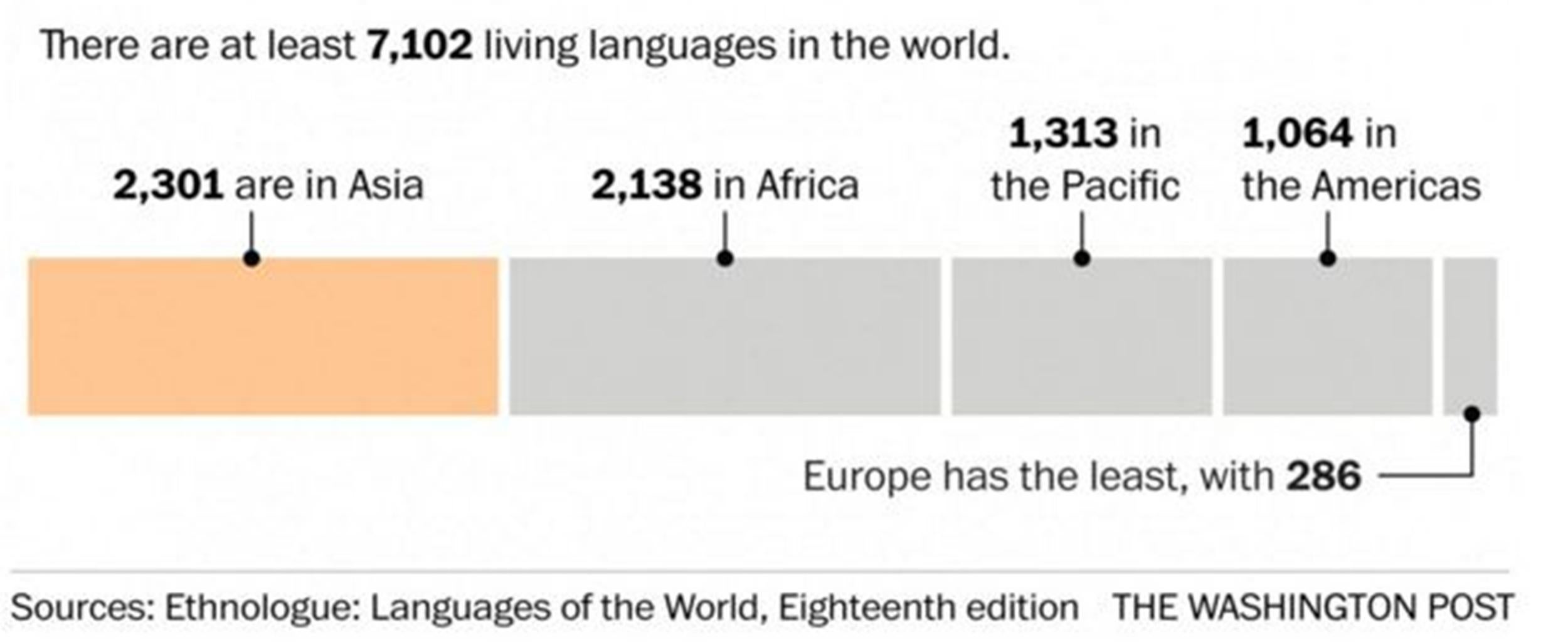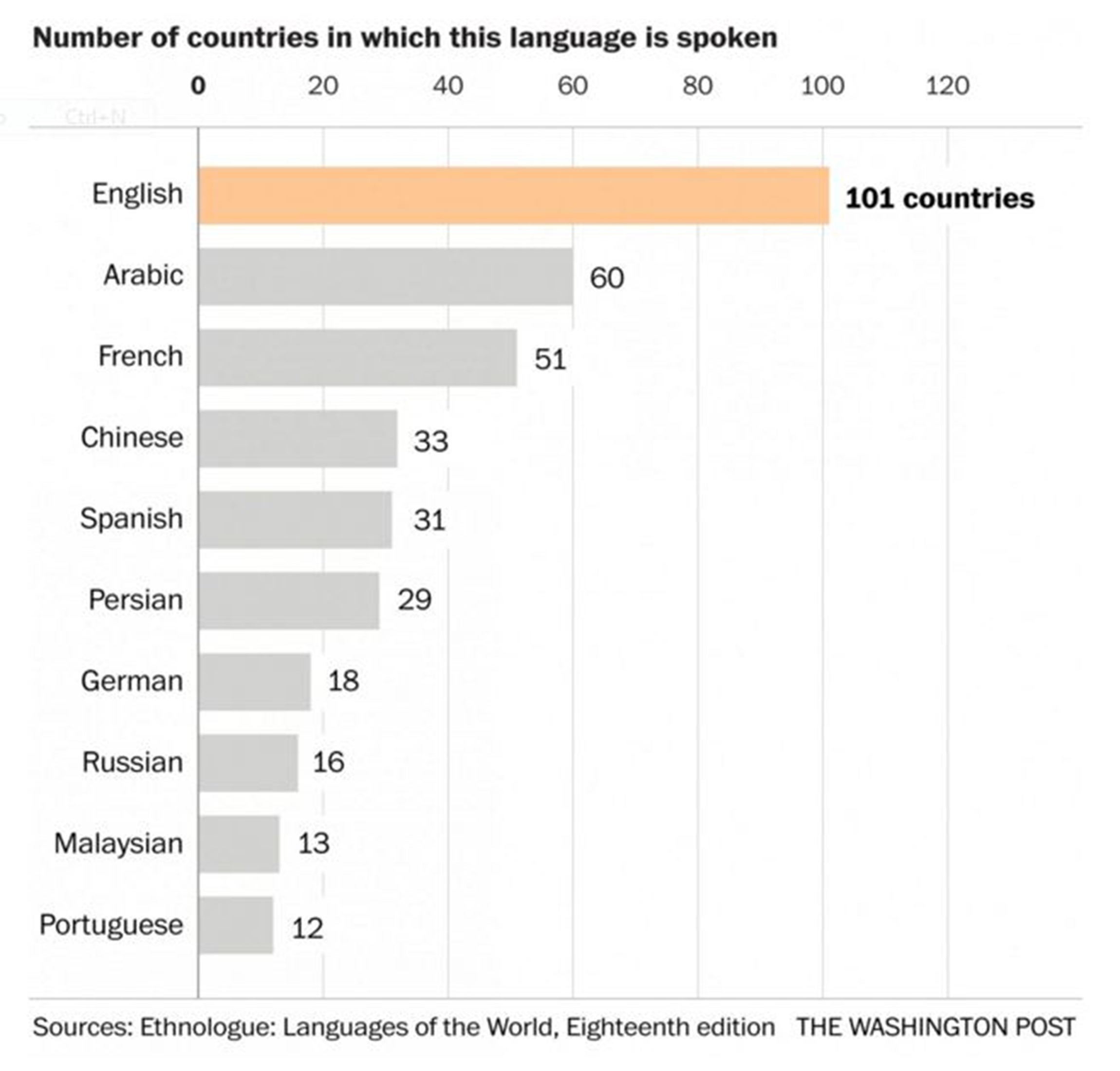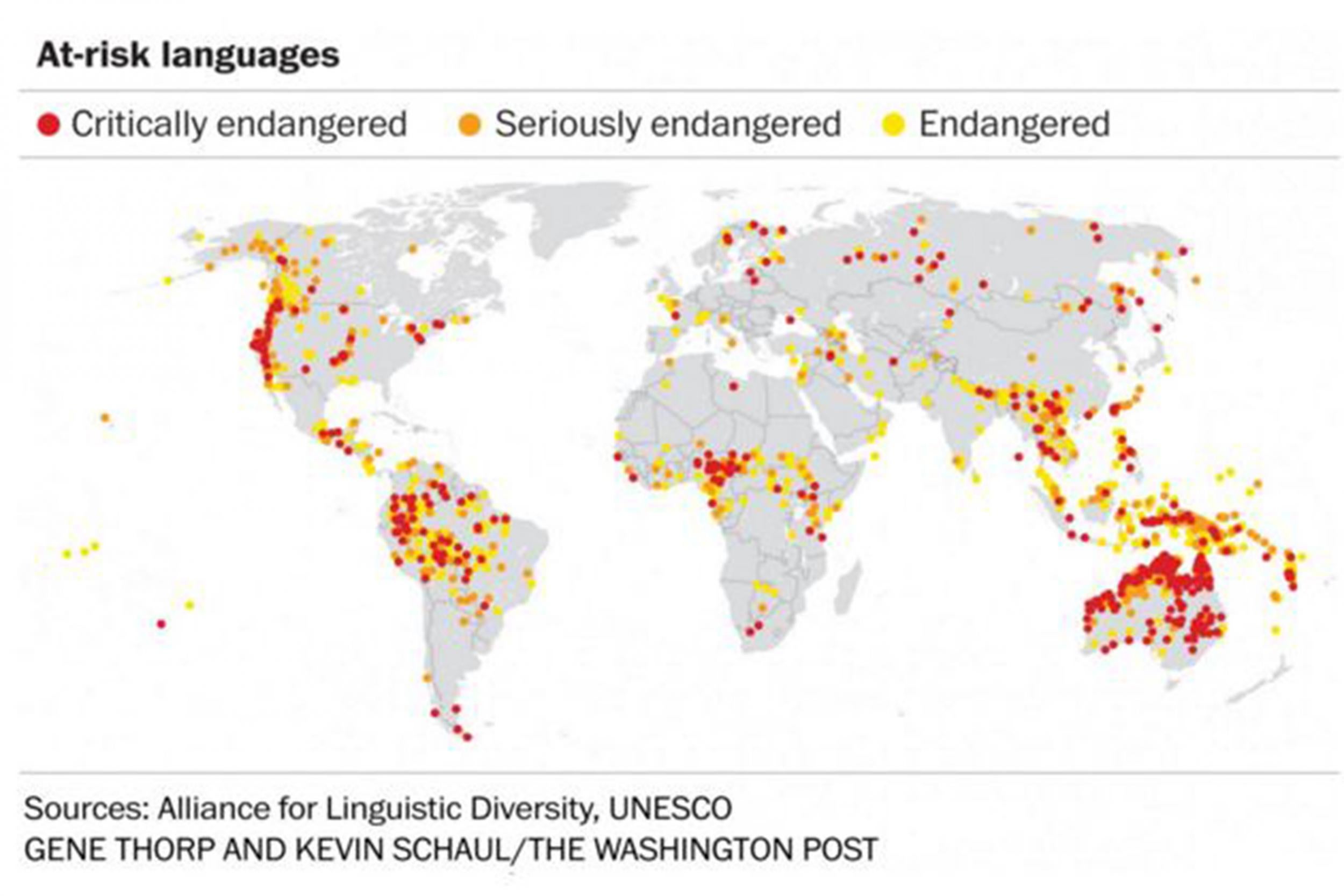The world's languages, in seven maps and charts
There are about 1,300 languages in the Pacific, and 1,064 in South and North America

These seven maps and charts, visualized by The Washington Post, will help you understand how diverse other parts of the world are in terms of languages.
1. Some continents have more languages than others

Not all continents are equally diverse in the number of spoken languages. Whereas Asia leads the statistics with 2,301 languages, Africa follows closely with 2,138.
There are about 1,300 languages in the Pacific, and 1,064 in South and North America. Europe, despite its many nation-states, is at the bottom of the pack with just 286.
2. These are some of the languages with the most native speakers

Chinese has more native speakers than any other language, followed by Hindi and Urdu, which have the same linguistic origins in northern India. English comes next with 527 million native speakers. Arabic is used by nearly 100 million more native speakers than Spanish.
The numbers are fascinating because they reflect the fact that two-thirds of the world's population share only 12 native languages. Those numbers were recently published by the University of Düsseldorf's Ulrich Ammon, who conducted a 15-year-long study.
His numbers are surprising, compared with the ones featured in the CIA's Factbook. According to the CIA, Spanish is spoken by 4.85 percent of the world's population and its use is even more widespread than English, which is spoken by 4.83 percent. However, the CIA numbers include only first native languages. Many people are bilingual, and whereas Spanish might be their first native language, English could be their second one. Ammon counts both first and second native language speakers.
The number for Portuguese is smaller than other sources suggest because not all Brazilians are native speakers. Some might also be surprised that Korean or Punjabi do not show up on the list: Indeed, both are nearly as widely spoken as Italian.
3. This map shows the countries with the most and least diversity of languages

As our visualization of Greenberg's diversity index shows, the United States is not as linguistically diverse as many other nations.
If you randomly select two people in Cameroon, for instance, there is a 97 percent likelihood that they will have different mother tongues. In the United States, there is only a 33 percent likelihood that this is going to happen. You can click on the various countries shown in the map above to find out how the United States compares with other countries.
4. Many popular languages are spoken in more than just one country

The reason why English, French and Spanish are among the world's most widespread languages has its roots in the imperial past of the nations where they originate.
5. English is widely used as an official language

However, whether a country has English as its official language says little about how its citizens really communicate with one another. In some of the nations highlighted above, only a tiny minority learned English as a native language.
6. Nevertheless, most languages are spoken only by a handful of people. That's why about half of the world's languages will disappear by the end of the century

About 3 percent of the world's population accounts for 96 percent of all languages spoken today. Out of all languages in the world, 2,000 have fewer than 1,000 native speakers.
Hence, according to UNESCO estimates, which we visualized in the map above, about half of the world's spoken languages will disappear by the end of the century. You can click on the map to enlarge it.
Linguistic extinction will hit some countries and regions harder than others. In the United States, endangered languages are primarily located along the West coast, as well as in reservations of indigenous people in the Midwest.
Globally,the Amazon rain forest, sub-Saharan Africa, Oceania, Australia and Southeast Asia are about to lose the most languages.
7. This chart shows how many people learn a language all over the world

Whereas English lags behind in the number of native speakers, it is by far the world's most commonly studied language. Overall, more people learn English than French, Spanish, Italian, Japanese, German and Chinese combined.
Some languages have only recently gained attention: The number of U.S. colleges that teach Chinese has risen by 110 percent between 1990 and 2013, making the language more accessible. During the same time, the number of offered Russian college courses decreased by 30 percent.
Some language skills could be more rewarding than others. If you are able to speak German, Americans could earn $128,000 extra throughout their career, according to MIT scientist Albert Saiz. At least financially, German is worth twice as much as French and nearly three times as much as Spanish, for instance.
Copyright: Washington Post
Join our commenting forum
Join thought-provoking conversations, follow other Independent readers and see their replies
Comments